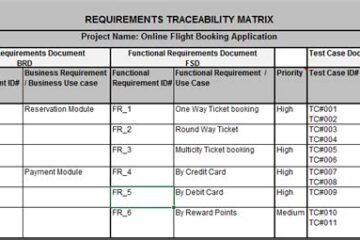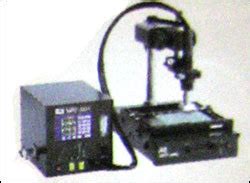1. Consumer Electronics
One of the most prominent application areas for PCBs is consumer electronics. From smartphones and tablets to laptops and gaming consoles, PCBs form the backbone of these devices. They house the various components, such as processors, memory chips, sensors, and connectors, that enable the functionality of these devices.
Smartphones and Tablets
Modern smartphones and tablets heavily rely on high-density PCBs to accommodate their compact form factors. These PCBs often feature multiple layers and fine-pitch components to maximize space utilization. They integrate various subsystems, such as the main logic board, display driver, camera module, and wireless communication modules.
Laptops and Desktops
PCBs in laptops and desktop computers serve as the motherboard, connecting the CPU, RAM, storage devices, and peripheral interfaces. They also include dedicated PCBs for graphics cards, sound cards, and network adapters. The use of PCBs allows for efficient heat dissipation and enables the modular design of these devices.
Home Appliances
PCBs are also found in a wide range of home appliances, such as smart TVs, digital cameras, audio systems, and kitchen appliances. They control the functionality, display information, and enable connectivity features in these devices.
| Application | Key PCB Requirements |
|---|---|
| Smartphones | High-density, multi-layer, fine-pitch components |
| Laptops | Motherboard, modular design, efficient heat dissipation |
| Home Appliances | Control functionality, display, connectivity |
2. Automotive Electronics
The automotive industry has seen a significant increase in the adoption of electronic systems over the years. PCBs play a vital role in enabling advanced features and functionalities in modern vehicles.
Engine Control Unit (ECU)
The ECU is the brain of a vehicle’s engine management system. It relies on PCBs to house the microcontrollers, sensors, and power electronics that control the engine’s performance, fuel injection, and emission control. PCBs in ECUs must withstand harsh environmental conditions, such as extreme temperatures, vibrations, and exposure to fluids.
Infotainment Systems
PCBs are used extensively in automotive infotainment systems, including the central display unit, audio system, and navigation system. They integrate various components, such as processors, memory, and interface controllers, to provide a seamless user experience. PCBs in infotainment systems often require high-speed data transmission and support for multiple communication protocols.
Advanced Driver Assistance Systems (ADAS)
ADAS technologies, such as adaptive cruise control, lane departure warning, and automatic emergency braking, rely on PCBs to process sensor data and make real-time decisions. These PCBs integrate radar, camera, and ultrasonic sensors, as well as high-performance processors and power management circuits.
| Application | Key PCB Requirements |
|---|---|
| Engine Control Unit | Withstand harsh environmental conditions |
| Infotainment Systems | High-speed data transmission, multiple protocols |
| ADAS | Sensor integration, real-time processing |
3. Medical Devices
PCBs are essential components in various medical devices, enabling advanced diagnostics, monitoring, and treatment capabilities.
Imaging Equipment
Medical imaging equipment, such as X-ray machines, CT scanners, and MRI systems, relies on PCBs for image acquisition, processing, and display. These PCBs handle high-speed data transmission, precise timing control, and complex signal processing algorithms. They must also meet stringent regulatory requirements for safety and reliability.
Monitoring Devices
PCBs are used in medical monitoring devices, such as patient monitors, ECG machines, and pulse oximeters. They acquire and process physiological signals, display vital parameters, and trigger alarms in case of abnormalities. PCBs in monitoring devices must be compact, power-efficient, and capable of wireless communication.
Implantable Devices
Implantable medical devices, such as pacemakers, defibrillators, and neurostimulators, rely on miniaturized PCBs to fit within the human body. These PCBs must be highly reliable, biocompatible, and consume minimal power to ensure long-term operation. They also incorporate wireless communication capabilities for remote monitoring and programming.
| Application | Key PCB Requirements |
|---|---|
| Imaging Equipment | High-speed data transmission, precise timing control |
| Monitoring Devices | Compact, power-efficient, wireless communication |
| Implantable Devices | Miniaturized, biocompatible, low power consumption |

4. Industrial Automation and Control
PCBs play a crucial role in industrial automation and control systems, enabling the monitoring and control of manufacturing processes, robotics, and energy management.
Programmable Logic Controllers (PLCs)
PLCs are the backbone of industrial automation systems. They use PCBs to interface with sensors, actuators, and communication networks. PCBs in PLCs must be rugged, reliable, and capable of operating in harsh industrial environments. They often incorporate industrial-grade components and protective coatings to withstand temperature extremes, vibrations, and chemical exposure.
Motor Drives and Power Electronics
PCBs are used in motor drives and power electronics to control and regulate the flow of electrical power in industrial equipment. They integrate high-power components, such as IGBTs and MOSFETs, along with gate drivers, current sensors, and protection circuits. PCBs in power electronics must handle high currents and voltages while maintaining efficient heat dissipation.
Human-Machine Interfaces (HMIs)
HMIs, such as operator panels and touch screens, rely on PCBs to provide a user-friendly interface for monitoring and controlling industrial processes. These PCBs integrate display drivers, touch controllers, and communication interfaces to enable real-time interaction between operators and machines.
| Application | Key PCB Requirements |
|---|---|
| PLCs | Rugged, reliable, industrial-grade components |
| Motor Drives | High-power handling, efficient heat dissipation |
| HMIs | Display drivers, touch controllers, communication interfaces |
5. Aerospace and Defense
PCBs are critical components in aerospace and defense applications, where reliability, performance, and environmental resistance are of utmost importance.
Avionics Systems
Avionics systems, such as flight control computers, navigation systems, and communication equipment, rely on high-performance PCBs. These PCBs must withstand extreme temperature ranges, vibrations, and electromagnetic interference (EMI). They often incorporate redundant circuits and fail-safe mechanisms to ensure continuous operation.
Radar and Surveillance Systems
PCBs in radar and surveillance systems handle high-frequency signals and complex signal processing algorithms. They require careful design considerations for impedance matching, shielding, and thermal management. PCBs in these systems often employ advanced materials, such as low-loss dielectrics and high-conductivity copper, to achieve optimal performance.
Satellite and Space Electronics
PCBs used in satellite and space applications must endure the harsh conditions of the space environment, including vacuum, radiation, and extreme temperature variations. They are designed with high reliability, redundancy, and radiation-hardened components to ensure long-term operation in space.
| Application | Key PCB Requirements |
|---|---|
| Avionics Systems | Extreme temperature ranges, vibration resistance, EMI shielding |
| Radar Systems | High-frequency signal handling, advanced materials |
| Space Electronics | Radiation-hardened components, high reliability, redundancy |
6. Telecommunications
PCBs are the backbone of modern telecommunications infrastructure, enabling high-speed data transmission, wireless connectivity, and network switching.
Wireless Base Stations
Wireless base stations use PCBs to handle radio frequency (RF) signal processing, power amplification, and digital signal processing. These PCBs must support multiple communication protocols, such as 4G LTE and 5G, and handle high data rates. They require careful RF design, including impedance matching, filtering, and shielding, to ensure signal integrity and minimize interference.
Optical Networking Equipment
PCBs in optical networking equipment, such as fiber optic transceivers and switches, handle high-speed digital signals and interface with optical components. They require high-speed interconnects, such as differential pairs and controlled impedance traces, to maintain signal integrity at multi-gigabit data rates.
Network Switches and Routers
Network switches and routers rely on PCBs to process and route data packets between network nodes. These PCBs integrate high-speed Ethernet controllers, memory buffers, and switching fabrics. They must support various network protocols and handle large amounts of data traffic while maintaining low latency and high reliability.
| Application | Key PCB Requirements |
|---|---|
| Wireless Base Stations | RF signal processing, multiple communication protocols |
| Optical Networking | High-speed interconnects, interface with optical components |
| Network Switches | High-speed Ethernet controllers, switching fabrics, low latency |
7. Renewable Energy Systems
PCBs are essential components in renewable energy systems, enabling the control, monitoring, and power conversion of solar, wind, and energy storage technologies.
Solar Inverters
Solar inverters use PCBs to convert the DC power generated by solar panels into AC power suitable for grid integration. These PCBs incorporate power electronics, such as IGBTs and MOSFETs, along with control and monitoring circuits. They must handle high voltages and currents while maintaining efficient power conversion and grid synchronization.
Wind Turbine Controllers
PCBs in wind turbine controllers monitor and control the operation of wind turbines. They interface with sensors to measure wind speed, direction, and turbine parameters, and control the pitch and yaw systems to optimize power generation. PCBs in wind turbine controllers must be rugged and reliable to withstand the harsh environmental conditions of wind farms.
Energy Storage Systems
PCBs are used in energy storage systems, such as battery management systems (BMS) and grid-tied energy storage. They monitor and control the charging and discharging of battery packs, ensure safety and protection, and interface with power electronics for energy conversion. PCBs in energy storage systems must handle high voltages and currents while maintaining precise control and monitoring capabilities.
| Application | Key PCB Requirements |
|---|---|
| Solar Inverters | Power electronics, high voltage and current handling, grid synchronization |
| Wind Turbine Controllers | Rugged and reliable, sensor interfacing, pitch and yaw control |
| Energy Storage Systems | Battery monitoring and control, high voltage and current handling |
8. IoT Devices
PCBs are the foundation of Internet of Things (IoT) devices, enabling sensing, processing, and wireless connectivity in a wide range of applications.
Smart Home Devices
PCBs in smart home devices, such as smart thermostats, security systems, and lighting controls, integrate sensors, microcontrollers, and wireless communication modules. They must be compact, power-efficient, and support various wireless protocols, such as Wi-Fi, Bluetooth, and Zigbee.
Wearable Electronics
Wearable electronics, such as smartwatches and fitness trackers, rely on miniaturized PCBs to house sensors, processors, and communication modules. These PCBs must be flexible or conformable to adapt to the shape of the wearable device and withstand the stresses of daily wear. They also require low power consumption to extend battery life.
Industrial IoT Sensors
PCBs in industrial IoT sensors enable the monitoring and control of various parameters, such as temperature, pressure, vibration, and asset tracking. These PCBs must be rugged, reliable, and capable of operating in harsh industrial environments. They often incorporate wireless connectivity, such as LoRaWAN or NB-IoT, for long-range communication.
| Application | Key PCB Requirements |
|---|---|
| Smart Home Devices | Compact, power-efficient, wireless connectivity |
| Wearable Electronics | Miniaturized, flexible or conformable, low power consumption |
| Industrial IoT Sensors | Rugged, reliable, wireless connectivity for harsh environments |
9. LED Lighting
PCBs are essential components in LED lighting systems, providing mechanical support, electrical interconnection, and thermal management for LED arrays.
LED Bulbs and Fixtures
PCBs in LED bulbs and fixtures serve as the substrate for mounting LED chips and driver circuits. They must provide efficient heat dissipation to ensure the longevity and performance of the LEDs. PCBs in LED lighting often incorporate metal-core substrates or thermal vias to enhance thermal conductivity.
Automotive LED Lighting
PCBs in automotive LED lighting, such as headlights, taillights, and interior lighting, must withstand the harsh automotive environment, including temperature extremes, vibrations, and moisture. They require robust designs, conformal coatings, and reliable interconnections to ensure long-term operation.
LED Displays and Signs
PCBs in LED displays and signs provide the electrical interconnection and control for large arrays of LEDs. They must handle high currents and provide precise control of individual LED pixels. PCBs in LED displays often incorporate flexible or rigid-Flex Designs to accommodate the shape and size of the display.
| Application | Key PCB Requirements |
|---|---|
| LED Bulbs and Fixtures | Efficient heat dissipation, metal-core substrates or thermal vias |
| Automotive LED Lighting | Robust designs, conformal coatings, reliable interconnections |
| LED Displays and Signs | High current handling, precise pixel control, flexible or rigid-flex designs |
10. Audio and Music Equipment
PCBs are crucial components in audio and music equipment, enabling the processing, amplification, and distribution of audio signals.
Audio Amplifiers
PCBs in audio amplifiers handle the amplification of low-level audio signals to drive speakers or headphones. They must provide low noise, high fidelity, and sufficient power handling capabilities. PCBs in audio amplifiers often incorporate specialized components, such as audiophile-grade capacitors and resistors, to ensure optimal sound quality.
Mixers and Audio Interfaces
PCBs in mixers and audio interfaces handle the routing, mixing, and digital-to-analog conversion of multiple audio channels. They require low-noise designs, high-quality analog circuitry, and precise timing control for synchronization. PCBs in professional audio equipment often incorporate balanced audio interfaces and robust connectors for reliability.
Musical Instruments and Effects Pedals
PCBs in electronic musical instruments and effects pedals process and manipulate audio signals to create unique sounds and effects. They integrate various analog and digital components, such as filters, oscillators, and DSP chips. PCBs in musical instruments and pedals must be rugged and reliable to withstand the rigors of live performances and frequent use.
| Application | Key PCB Requirements |
|---|---|
| Audio Amplifiers | Low noise, high fidelity, sufficient power handling |
| Mixers and Audio Interfaces | Low-noise designs, high-quality analog circuitry, precise timing control |
| Musical Instruments and Pedals | Rugged and reliable, analog and digital signal processing |
Frequently Asked Questions (FAQ)
1. What are the advantages of using PCBs in electronic devices?
PCBs offer several advantages in electronic devices:
– Miniaturization: PCBs enable the compact packaging of electronic components, allowing for smaller and more portable devices.
– Reliability: PCBs provide reliable electrical connections and mechanical support, reducing the risk of component failures and short circuits.
– Cost-effectiveness: PCBs streamline the manufacturing process, reducing assembly time and costs compared to point-to-point wiring.
– Reproducibility: PCBs ensure consistent and precise layout of components, enabling mass production and reducing variations between devices.
2. What are the different types of PCBs used in electronic applications?
There are several types of PCBs used in electronic applications:
– Single-sided PCBs: These have conductive traces on one side of the substrate and are used in simple, low-density applications.
– Double-sided PCBs: These have conductive traces on both sides of the substrate, allowing for higher component density and more complex layouts.
– Multi-layer PCBs: These consist of multiple layers of conductive traces separated by insulating layers, enabling high-density interconnections and advanced routing capabilities.
– Flexible PCBs: These use flexible substrates, such as polyimide, to create bendable and conformable circuits for applications requiring flexibility or space constraints.
– Rigid-flex PCBs: These combine rigid and flexible sections in a single board, allowing for three-dimensional packaging and improved reliability in moving parts.
3. What are the key considerations when designing PCBs for different applications?
When designing PCBs for different applications, several key considerations must be taken into account:
– Electrical requirements: The PCB design must meet the electrical specifications, such as signal integrity, power distribution, and grounding.
– Mechanical requirements: The PCB must fit within the physical constraints of the device and withstand the expected environmental conditions, such as temperature, vibration, and shock.
– Manufacturing feasibility:



0 Comments